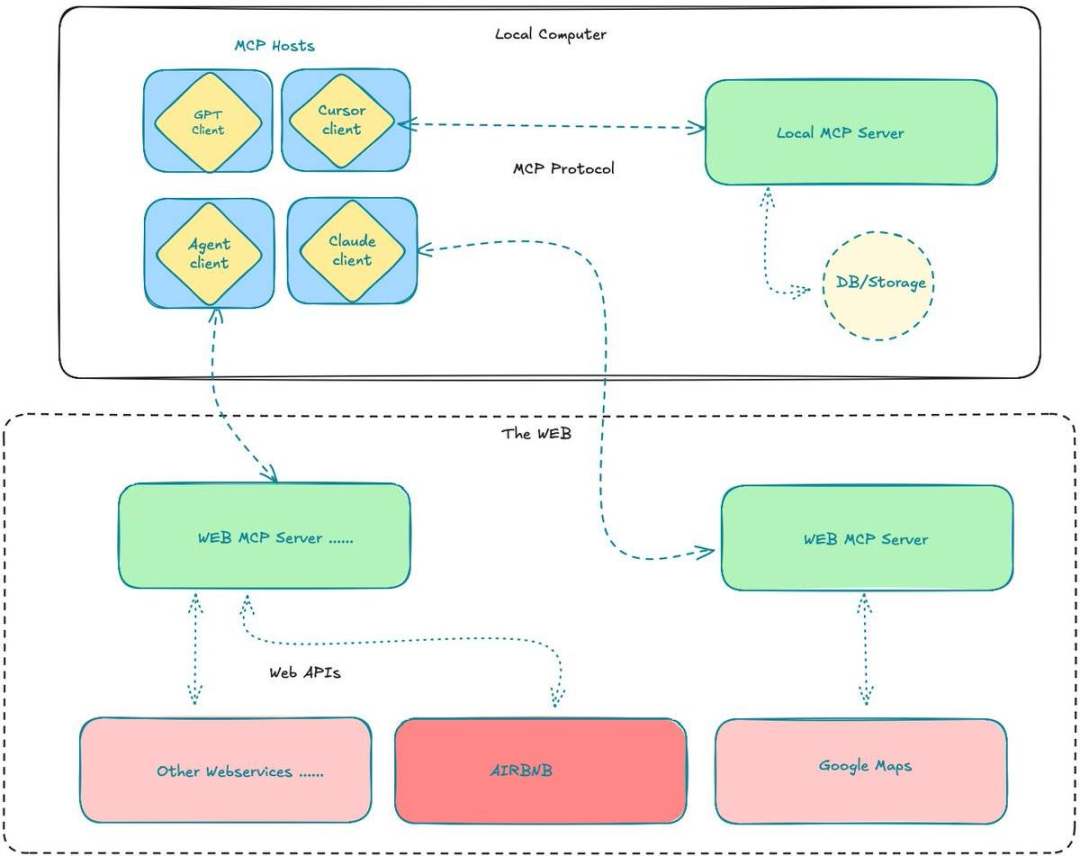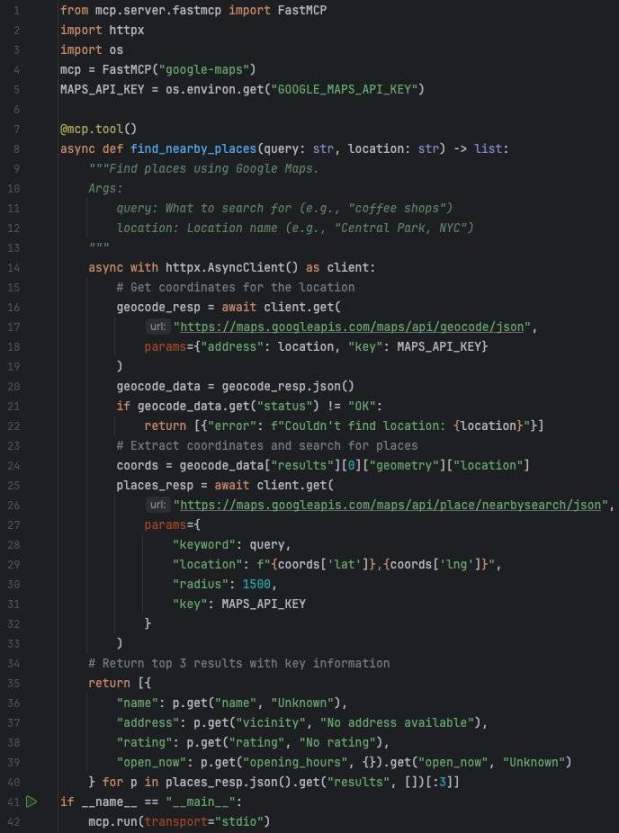Alliance DAO Researcher: In-depth understanding of the MCP concept behind DARK's popularity

Reprinted from panewslab
04/19/2025·8DOriginal author: Mohamed ElSeidy
Original translation: TechFlow
Original author: Mohamed ElSeidy
Original translation: TechFlow
Introduction
Yesterday, $Dark, an AI-related token on Solana, was launched on Binance Alpha, and its market value has reached about 40 million US dollars.
In the latest crypto AI narrative, $Dark is closely related to "MCP" (model context protocol), which is also an area that Web2 technology companies such as Google are paying attention and exploring recently.
But at present, there are not many articles that can clearly explain the concept and narrative influence of MCP.
Below is an easy-to-understand article about the MCP protocol by Alliance DAO researcher Mohamed ElSeidy. It tells the principles and positioning of MCP in very popular language, which may be helpful for us to quickly understand the latest narrative.
Shenchao TechFlow compiles the full text.
During my years at Alliance, I have witnessed countless founders building their own dedicated tools and data integrations that are embedded into their AI agents and workflows. However, these algorithms, formal and unique datasets are locked behind custom integrations that few people will use.
This is changing rapidly with the advent of Model Context Protocol (MCP). MCP is defined as an open protocol that standardizes how applications communicate with large language models (LLMs) and provide context. One metaphor I really like is: "For AI applications, MCP is like USB-C in hardware"; it is standardized, plug-and-play, versatile, and transformative.
Why choose MCP?
Large language models (such as Claude, OpenAI, LLAMA, etc.) are very powerful, but they are limited by the information currently accessible. This means that they usually have knowledge cutoff points, cannot browse the web independently, and cannot directly access your personal files or dedicated tools unless they have some form of integration.
In particular, prior to this, developers faced three main challenges when connecting LLM to external data and tools:
-
Integration Complexity: Building a separate integration for each platform (such as Claude, ChatGPT, etc.) requires repeated efforts and maintenance of multiple code bases.
-
Tool fragmentation: Each tool feature (e.g., file access, API connection, etc.) requires its own dedicated integration code and permissions model.
-
Distribution restricted: Dedicated tools are restricted to specific platforms, limiting their reach and impact.
-
MCP solves these problems by providing a standardized approach that enables any LLM to securely access external tools and data sources through a common protocol. Now that we understand the role of MCP, let's see what people are building with it.
-
What are people building with MCP?
-
The MCP ecosystem is currently in an explosion of innovation. Here are some of the latest examples of some of the developers I found on Twitter to show their work:
-
AI-powered storyboard: A MCP integration that enables Claude to control ChatGPT-4o, automatically generates a complete storyboard in Ghibli style without any human intervention.
-
ElevenLabs Voice Integration: An MCP server that allows Claude and Cursor to access the entire AI audio platform with simple text prompts. The integration is powerful enough to create a voice proxy that can make out-dial calls. This shows how MCP extends current AI tools to the audio world.
-
Browser automation with Playwright: An MCP server that enables AI agents to control web browsers without screenshots or visual models. This allows LLM to directly control browser interaction through standardized methods, creating new possibilities for web page automation.
-
Personal WhatsApp Integration: A server that connects to your personal WhatsApp account enables Claude to search for messages and contacts and send new messages.
-
Airbnb Search Tool: An Airbnb apartment search tool that demonstrates the simplicity of MCP and the ability to create practical applications that interact with web services.
-
Robot Control System: An MCP controller for robots. This example bridges the gap between LLM and physical hardware, demonstrating the potential of MCP in IoT applications and robotics.
-
Google Maps and Local Search: Connect Claude to Google Maps data to create a system that can find and recommend local businesses, such as coffee shops. This extension enables AI assistants to provide location-based services.
-
Blockchain Integration: The Lyra MCP project brings MCP functionality to StoryProtocol and other web3 platforms. This allows interaction with blockchain data and smart contracts, opening up new possibilities for decentralized applications enhanced through AI.
What is particularly striking about these examples is their diversity. In just a short time since the launch of MCP, developers have created integrations covering creative media production, communication platforms, hardware control, location services and blockchain technologies. These various applications follow the same standardized protocol, demonstrating the versatility of MCP and its potential to become a common standard for AI tool integration.
If you want to view a comprehensive collection of MCP servers, you can access the official MCP server library on GitHub. Please read the disclaimer carefully and take care of running and authorized content before using any MCP server.
Commitment and Hype
In the face of any new technology, it is worth asking: Is MCP truly transformative, or is it just another tool that will eventually fade?
After observing numerous startups, I believe MCP represents a real turning point in the development of AI. Unlike many trends that promise revolution but only bring about gradual change, MCP is a productivity gain that addresses infrastructure issues that hinder the development of the entire ecosystem.
What makes it special is that it does not attempt to replace or compete with existing AI models, but makes them more useful by connecting them to the required external tools and data.
Nevertheless, reasonable concerns about safety and standardization remain. Just as any protocol is in the early stages, we may see the trouble of growing up as the community explores best practices in auditing, permissions, authentication, and server verification. Developers need to trust the functionality of these MCP servers and cannot blindly trust them, especially when they become rich. This article discusses some recent vulnerabilities exposed by blindly using unscrupulously reviewed MCP servers, even when running locally.
The future of AI lies in context
The most powerful AI applications will no longer be independent models, but rather a professional capability ecosystem connected through standardized protocols like MCP. For startups, MCP represents an opportunity to build professional components suitable for these growing ecosystems. This is an opportunity to leverage your unique knowledge and abilities while benefiting from a large investment in the underlying model.
Looking ahead, we can expect MCP to become a fundamental component of the AI infrastructure, just as HTTP is to the network. As protocols mature and adoption grows, we are likely to see the emergence of a dedicated MCP server market that enables AI systems to leverage nearly any imagined capabilities or data source.
Has your startup tried to implement MCP? I would love to hear about your experience in the comments. If you have built something interesting in this area, please contact us at @alliancedao and apply.
appendix
For those interested in understanding how MCP actually works, the following appendix provides a technical breakdown of its architecture, workflow, and implementation.
Behind the Scenes of MCP
Similar to HTTP standardizing how networks access external data sources and information, MCP does this for the AI framework, creating a common language that enables different AI systems to communicate seamlessly. Let's explore how it is done.
MCP architecture and processes

The main architecture follows the client-server model and works in concert with four key components:
-
MCP Host: Includes desktop AI applications such as Claude or ChatGPT, IDEs such as cursorAI or VSCode, or other AI tools that require access to external data and features.
-
MCP Client: A protocol processor embedded in the host that maintains a one-to-one connection to the MCP server.
-
MCP Server: A lightweight program that exposes specific features through standardized protocols.
-
Data source: including files, databases, APIs, and services, which MCP servers can access securely.
Now that we have discussed these components, let’s look at their interactions in a typical workflow:
-
User interaction: The user asks or makes a request in an MCP host (such as Claude Desktop).
-
LLM Analysis: LLM analyzes requests and determines that external information or tools are required to provide a complete response.
-
Tool Discovery: The MCP client querys the connected MCP server to discover available tools.
-
Tool selection: LLM decides which tools to use based on request and available features.
-
Permission request: The host requests permissions to execute the selected tool from the user to ensure transparency and security.
-
Tool execution: After approval, the MCP client sends a request to the appropriate MCP server, which uses its professional access to the data source to perform operations.
-
Result processing: The server returns the result to the client, which the client formats it for use by LLM.
-
Response generation: LLM integrates external information into a comprehensive response.
-
User presentation: Finally, the response is presented to the end user.
The power of this architecture is that each MCP server focuses on a specific domain, but uses standardized communication protocols. In this way, developers do not need to rebuild integrations for each platform, but only need one-time development tools to serve the entire AI ecosystem.
How to build your first MCP server
Now let's see how to implement a simple MCP server in a few lines of code using the MCP SDK.
In this simple example, we want to expand the capabilities of Claude Desktop so that it can answer questions like "What are the coffee shops near Central Park?", which are sourced from Google Maps. You can easily expand this feature to get comments or ratings. But now, we focus on the MCP tool find_nearby_places, which will allow Claude to get this information directly from Google Maps and present the results in a conversational way.

As you can see, the code is very simple. First, it converts the query to a Google Maps API search and then returns top-level results in structured format. In this way, the information is passed back to the LLM for further decision-making.
Now we need to let Claude Desktop know about this tool, so we register it in its configuration file as follows:
macOS path: ~/Library/Application Support/Claude/claude_desktop_config.jsonWindows path: %APPDATA%\Claude\claude_desktop_config.json
That's it, you're done! Now you have successfully expanded Claude's capabilities to find locations from Google Maps in real time.
